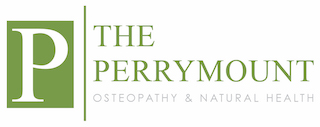Call to book or for more information 01444 410944
Are you struggling with breast feeding but really want to continue?
Do you live local to Haywards Heath and want to speak to someone about how we can help you or to book an appointment? Fill the form out below and we will call you back
Disclaimer: Osteopaths are not allowed to say they can “treat” specific baby conditions, such as colic because no paid for research has been done showing it can help. What we actually have is 1000’s of parents spreading the word that their baby has benefitted in some way. Cranial sacral treatment looks at the baby as a whole, not as treating a “colic baby” or “reflux baby” anyway. Having said this probiotics have scientifically been studied to ease colic, so in this instance it would be allowed to say that probiotics help colic. Probiotics are used very often within the holistic approach to helping babies.
What follows now is a collection of scientific studies with a very brief explanation by myself about breast milk and how it is affected by the mothers diet. I think these all contribute to an over all view that what a mothers eats DOES affect how there baby behaves and sleeps on top of the more obvious windy and colic symptoms.
Pain in newborns is relieved from the odours of their own mothers breast milk. I put this in here as it illustrates why your baby may be very clingy after a traumatic birth involving ventouse or forceps delivery. They may well be wanting to smell your milk to get pain relief.
Neurosci Res. 2009 Jan;63(1):66-71. doi: 10.1016/j.neures.2008.10.007. Epub 2008 Nov 1.
The calming effect of a maternal breast milk odor on the human newborn infant.
Nishitani S1, Miyamura T, Tagawa M, Sumi M, Takase R, Doi H, Moriuchi H, Shinohara K.
Abstract
We examined the effects of the odors from mother's milk, other mother's milk and formula milk on pain responses in newborns undergoing routine heelsticks. Forty-eight healthy infants were assigned to four groups, an own mother's breast milk odor group (Own MM), another mother's breast milk odor group (Other MM), a formula milk odor group (Formula M) and a control group. To assess infant distress in response to the heelsticks, their crying, grimacing and motor activities were recorded during the experiment as behavioral indices of the pain response. After the heelstick, the behavioral indices of the Own MM group were lower than those of other groups. By contrast, the Other MM and Formula M groups showed no significant changes compared with the Control group. We also measured salivary cortisol concentration as a biochemical index in Control and Own MM infants before and after heelstick. After the heelstick, the level of salivary cortisol was significantly increased in Control infants, but not in Own MM infants. These results suggest that pain is relieved in human newborns when they are exposed to odors from their mother's milk.
Vitamin D cord levels and eczema in babies
Cord Blood 25-Hydroxyvitamin D3 and Allergic Disease During Infancy, Pediatrics, November 2012, VOLUME 130 / ISSUE 5 Anderson P. Jones, Debra Palmer, Guicheng Zhang, Susan L. Prescott
http://pediatrics.aappublications.org/content/88/4/737?sso=1&sso_redirect_count=3&nfstatus=401&nftoken=00000000-0000-0000-0000-000000000000&nfstatusdescription=ERROR%3A%20No%20local%20token&nfstatus=401&nftoken=00000000-0000-0000-0000-000000000000&nfstatusdescription=ERROR%3a+No+local+token
This study found that mothers milk smelt of garlic 2 hours after the mother consumed. The fascinating part is that the babies suckled for LONGER when the milk smelt of garlic. For me this shows that it is a possibility that particular foods will trigger a baby to feed longer which could then have a knock on effect of being more content and sleeping longer.
Maternal Diet Alters the Sensory Qualities of Human Milk and the Nursling's Behavior
Julie A. Mennella, Gary K. Beauchamp Paediatrics October 1991, VOLUME 88 / ISSUE 4
Abstract
Although the majority of human infants are breast-fed for the first few months of life, there is a paucity of information regarding the sensory qualities of human milk and how these qualities are affected by maternal diet. The present study investigated the effects of garlic ingestion by the mother on the odor of her breast milk and the suckling behavior of her infant. Evaluation of the milk samples by a sensory panel revealed garlic ingestion significantly and consistently increased the perceived intensity of the milk odor; this increase in odor intensity was not apparent 1 hour after ingestion, peaked in strength 2 hours after ingestion, and decreased thereafter. That the nursling detected these changes in mother's milk is suggested by the finding that infants were attached to the breast for longer periods of time and sucked more when the milk smelled like garlic. There was a tendency for infants to ingest more milk as well; the lack of a significant effect may be due to the inherent limitations on the total amount of milk available to the infant.
Vitamin D
http://pediatrics.aappublications.org/content/130/5/e1128
Mothers who eat junk food during pregnancy and breastfeeding may be putting their children at risk of overeating and developing obesity, according to a new study. The research suggests that pregnant and breastfeeding women should not indulge in fatty, sugary and salty foods under the misguided assumption that they are "eating for two."
This study found that breast milk at different times of contained ingredients to promote sleep. So evening milk promoted sleep. Important to know is you are expressing, use the evening expressed milk for the evening feeds.
Sánchez et al. The possible role of human milk nucleotides as sleep inducers. Nutritional Neuroscience, 2009; 12 (1): 2 DOI: 10.1179/147683009X388922
Eating Fish While Pregnant, Longer Breastfeeding, Lead To Better Infant Development, Research Finds
September 10, 2008, Harvard Medical School Summary: Higher prenatal fish consumption leads to better physical and cognitive development in infants, according to a study of mothers and infants from Denmark. Longer breastfeeding was also independently beneficial.
https://www.sciencedaily.com/releases/2008/09/080909205559.htm
Carotenoid levels in breast milk vary by country, diet
June 10, 2015 Purdue University Summary: An analysis of breast milk concludes that levels of health-promoting compounds known as carotenoids differ by country, with the U.S. lagging behind China and Mexico, a reflection of regional dietary habits.
https://www.sciencedaily.com/releases/2015/06/150610161738.htm
[BABY SLEEP HELP] the hormone that makes us sleep is melatonin and it is made from tryptophan. This study shows that there is a correlation between the tryptophan in breast milk and the baby sleeping better. So.... Let's have a think about how to improve and take advantage of this in a mum so her baby sleeps better. It also proves yet again that the constituents of breast milk vary and affect the baby!
http://www.ncbi.nlm.nih.gov/pubmed/16380706
Evening breast milk means a good sleep
Mothers who use a breast pump to express milk during the day and then bottle-feed it to their baby at night may be letting themselves in for a sleepless night.
Naturally occurring chemicals called nucleotides that have previously been linked to sleepiness only reach their highest concentrations in human breast milk that is expressed at night. Nucleotides are the building blocks of DNA, but they also participate in cellular signalling and metabolic processes within cells. Several of them have also been implicated in sleep. The chemicals had already been found in breast milk, their concentrations increasing in the first few weeks after birth, so it seemed likely that they are important for tissue development. Now it seems they may have an additional role.
Cristina Sánchez at the University of Extremadura in Badajoz, Spain, and her colleagues looked at the concentrations of 5’UMP, 5’AMP and 5”GMP – the three nucleotides most strongly associated with sleep and sedation – in the breast milk of 30 healthy mothers who had been breast-feeding for at least 3 months. Samples of milk were collected before each feed over a 24-hour period, with between six and eight samples collected per mother.
They found that concentrations of 5’AMP were highest at the beginning of the night, while levels of 5’GMP and 5’UMP increased as the night wore on. These sedatives were found at much lower concentrations in milk expressed during the day.
“It is a mistake for the mother to express the milk at a certain time and then store it and feed it to the baby at a different time,” says Sánchez.
She suggests that 5’AMP in breast milk might be fuelling the release of the sleep-promoting neurotransmitter GABA, while 5’GMP is involved in the secretion of melatonin,which helps regulate the natural body clock. 5’UMP is known to promote the amount of both REM and non-REM sleep.
Since previous studies have also hinted that bottle-fed infants have more problems sleeping through the night, Sánchez’s colleague, Javier Cubero, has been investigating whether sleep-inducing nucleotides could be added to formula milk.
In a separate study, Sánchez and Cubero created a “night-time” milk by adding 5’AMP and 5’UMP to standard formula milk. Infants receiving this milk between 6 pm and 6 am, and normal milk during the day, fell asleep faster and spent longer sleeping than when they drank standard formula milk all the time.
Journal references: Nutritional Neuroscience, DOI: 10.1179/147683008X344174; Neuroendocrinology Letters, vol 28, p 360
https://www.newscientist.com/article/dn17908-evening-breast-milk-means-a-good-sleep/
Pregnant mother's diet impacts infant's sense of smell, alters brain development
December 6, 2010 University of Colorado Denver Summary: New study shows a pregnant mother's diet directly impacts an infant's food choices in the future.
https://www.sciencedaily.com/releases/2010/12/101201095559.htm
Breast milk reveals a correlation between dietary fats and academic success
September 11, 2014 University of California - Santa Barbara Summary: You are what you eat, the saying goes, and now a study suggests that the oft-repeated adage applies not just to physical health, but to brain power as well. Researchers compared the fatty acid profiles of breast milk from women in over two dozen countries with how well children from those same countries performed on academic tests. Their findings show that the amount of omega-3 docosahexaenoic acid (DHA) in a mother's milk is the strongest predictor of test performance. It outweighs national income and the number of dollars spent per pupil in schools.
https://www.sciencedaily.com/releases/2014/09/140911094749.htm
Breastfeeding is good for yet another reason, researchers discover
Antibodies in mother's milk help shape newborns' immune systems May 6, 2016 University of California - Berkeley Summary: A mother's breast milk supports immune responses in her newborn that help the infant's gut become a healthy home to a mix of bacterial species, thanks in part to newly identified antibodies from the mother, according to a study.
Maternal Adversities during Pregnancy and Cord Blood Oxytocin Receptor (OXTR) DNA Methylation
Eva Unternaehrer, PhDa,b,c, Margarete Bolten, PhDb,d, Irina Nast, PhDb, Simon Staehli, BSce, Andrea H. Meyer, PhDa, Emma Dempster, PhDf, Dirk H. Hellhammer, PhDe, Roselind Lieb, PhDa,b and Gunther Meinlschmidt, PhDa,b,g,
Abstract The aim of this study was to investigate whether maternal adversities and cortisol levels during pregnancy predict cord blood DNA methylation of the oxytocin receptor (OXTR). We collected cord blood of 39 babies born to mothers participating in a cross-sectional study (N=100) conducted in Basel, Switzerland (2007 – 2010). Mothers completed the Inventory of Life Events (ILE, second trimester: T2), the Edinburgh Postnatal Depression Scale (EPDS, third trimester: T3), the Trier Inventory of Chronic Stress (TICS-K, one to three weeks postpartum) and provided saliva samples (T2, T3) for maternal cortisol profiles, as computed by the area under the curve with respect to ground (AUCg) or increase (AUCi) for the cortisol awakening response (CAR) and for diurnal cortisol profiles (DAY). OXTR DNA methylation was quantified using Sequenom EpiTYPER®. The number of stressful life events (p=0.032), EPDS score (p=0.007) and cortisol AUCgs at T2 (CAR: p=0.020; DAY: p=0.024) were negatively associated with OXTR DNA methylation. Our findings suggest that distinct prenatal adversities predict decreased DNA methylation in a gene that is relevant for childbirth, maternal behavior and wellbeing of mother and offspring. If a reduced OXTR methylation increases OXTR expression, our findings could suggest an epigenetic adaptation to an adverse early environment.
The tests showed only around 1% of the flavour compounds were detectable in the breast milk, although some persisted for longer than others. Banana flavour peaked within the first hour, while menthol persisted for eight hours.
In a second series of experiments, Hausner checked whether breastfed babies were more likely to eat certain meals than babies fed on formula from a bottle. She found breastfed babies were happier eating meals laced with caraway flavouring than babies fed on formula.
"Diet does change the flavouring of the milk, but it's not like if the mother eats apple pie, the infant thinks, 'Mmm, apple pie', and gets to like it," Hausner said. "It seems that breastfed infants get used to small flavour changes and so they become more accepting of a variety of flavours compared to formula-fed infants."
"It seems that breastfeeding itself does prime the infants to be more accepting of new flavours when they start to eat solid food," she added.
https://www.theguardian.com/science/2008/jul/24/humanbehaviour.foodtech
Breastfed babies more receptive to tastes, say food research scientists
Scientists have discovered another reason why breast is best. Already associated with increased intelligence, greater social mobility and protection against ill health, breastfeeding may also help babies develop a more sophisticated palate. Researchers at the University of Copenhagen conducted tests on breast milk to see how the flavour changed with the mother's diet. They found that different foods caused subtle shifts in the flavour of breast milk, which appear to prime babies for the wide range of foods they are likely to encounter once they are weaned. Helene Hausner, at the Centre for Advanced Food Studies at the University of Copenhagen, decided to investigate the influence of diet on breast milk after reading a study that showed how babies enjoyed a meal of carrot-flavoured cereal more if their mothers drank carrot juice while breastfeeding.
https://www.theguardian.com/science/2008/jul/24/humanbehaviour.foodtech
Balancing Blood sugar, helps breast feeding. As mentioned in this article
https://www.sciencedaily.com/releases/2013/07/130705212228.htm
The Cincinnati Children's Hospital Medical Center study, published online in Breastfeeding Medicine, adds to evidence that maternal glucose intolerance may impede lactation. Although insulin resistance is common among obese women, and obesity is a risk factor for poor lactation outcomes, the study is believed to be the first to examine maternal diabetes as a risk factor for low milk supply.
https://www.sciencedaily.com/releases/2016/02/160217130709.htm
The Association between the Macronutrient Content of Maternal Diet and the Adequacy of Micronutrients during Pregnancy in the Women and Their Children’s Health (WATCH) Study
Michelle Blumfield,1,2 Alexis Hure,3 Lesley MacDonald-Wicks,1 Roger Smith,2,3 Stephen Simpson,4 David Raubenheimer,5 and Clare Collins1,2,*
Nutrition during pregnancy can induce alterations in offspring phenotype. Maternal ratio of protein to non-protein (P:NP) energy has been linked to variations in offspring body composition and adult risk of metabolic disease. This study describes the dietary patterns of pregnant women by tertiles of the P:NP ratio and compares diet to Australian recommendations. Data are from 179 Australian women enrolled in the Women and Their Children’s Health Study. Diet was assessed using a validated 74-item food frequency questionnaire. Food group servings and nutrient intakes were compared to the Australian Guide to Healthy Eating and Australian Nutrient Reference Values. Higher maternal P:NP tertile was positively associated with calcium (P = 0.003), zinc (P = 0.001) and servings of dairy (P = 0.001) and meat (P = 0.001) food groups, and inversely associated with the energy dense, nutrient poor non-core (P = 0.003) food group. Micronutrient intakes were optimized with intermediate protein (18%E–20%E), intermediate fat (28%E–30%E) and intermediate carbohydrate (50%E–54%E) intakes, as indicated in tertile two. Results suggest a moderate protein intake may support pregnant women to consume the largest variety of nutrients across all food groups.
When mothers at eggs, the specific egg protein, ovalbumin, was found in their breast milk. 25% of mothers that ate the eggs had no ovalbumin in their breast milk though.
Pediatrics November 2009, VOLUME 124 / ISSUE Supplement 2 Effect of Maternal Egg Consumption on Breast Milk Ovalbumin Concentration Karla L. Davis, Stephen E. Scranton
Tree nut foods aggravating eczema
J Dermatol. 2011 Feb;38(2):140-5. doi: 10.1111/j.1346-8138.2010.00968.x. Epub 2010 Sep 2. Aggravation of atopic dermatitis in breast-fed infants by tree nut-related foods and fermented foods in breast milk. Uenishi T1, Sugiura H, Tanaka T, Uehara M.
Abstract
Ninety-two exclusively breast-fed Japanese infants with atopic dermatitis were studied to see whether tree nut-related foods (chocolate and coffee) and fermented foods (cheese, yogurt, bread, soy sauce, miso soup and fermented soy beans) eaten by their mothers affected their skin condition. Of the 92 infants, 67 (73%) showed improvement of skin lesions when their mothers avoided these foods and showed aggravation of skin lesions when these foods were reintroduced. The predominant offending foods were chocolate, yogurt, soy sauce and miso soup. A long-term maternal exclusion of the trigger foods brought about progressive improvement of skin lesions in the majority of the infants. These findings suggest that tree nut-related foods and fermented foods are important offending foods of atopic dermatitis in breast-fed infants.
The Cincinnati Children's Hospital Medical Center study, published online in Breastfeeding Medicine, adds to evidence that maternal glucose intolerance may impede lactation. Although insulin resistance is common among obese women, and obesity is a risk factor for poor lactation outcomes, the study is believed to be the first to examine maternal diabetes as a risk factor for low milk supply.
https://www.sciencedaily.com/releases/2016/02/160217130709.htm




